Mythological Creatures
Learn about the Chinese and Slavic folklore and mythical creatures that appear in our book.
Chinese Folklore and mythical creatures
Chinese folklore is teeming with all sorts of magical animals, monsters, mythological figures and gods. Here is a little background information on those appearing in our story.
Dragon—The most famous of all the enchanted creatures from China. Like the chimera from Greek myth, it is composed of different parts of animals. It often has the body of a snake, but with legs, and can feature antlers, the eyes of a demon, the ears of a cow or ox, and so forth. They are the masters of the skies, seas, and other sources of water. The dragon symbolizes good fortune and power, and also represented the Chinese emperor and often, China itself.
Fox Spirit—Magical foxes have been part of Chinese folklore and mythology for thousands of years. With their amazing shapeshifting abilities, they typically make mischief but occasionally punish wrongdoers. In a wonderful collection of supernatural stories by Pu Songling (1640-1715 AD) called Strange Tales From a Chinese Studio, crafty foxes pull all kinds of tricks on unsuspecting people.

Qing Dynasty depiction of the fox spirit.
Hungry Ghost—Since ancient times, one of the most important Chinese traditions has been honoring one’s ancestors. Hungry ghosts come in multiple forms but are often spirits of people who died in some tragic way or who are condemned to hunger because they are neglected by their descendants and not given offerings of food. Their hunger makes them unpredictable and, sometimes, vengeful.
Phoenix—The Chinese phoenix, or fenghuang, is unrelated to the phoenix of Western mythology, which rises from the ashes of destruction. Sometimes it is portrayed as a chimera, with elements of a variety of other birds and sometimes even a turtle’s shell on its back. The phoenix represents goodness and grace, and it was thought to show itself just before a wise emperor would come into power.
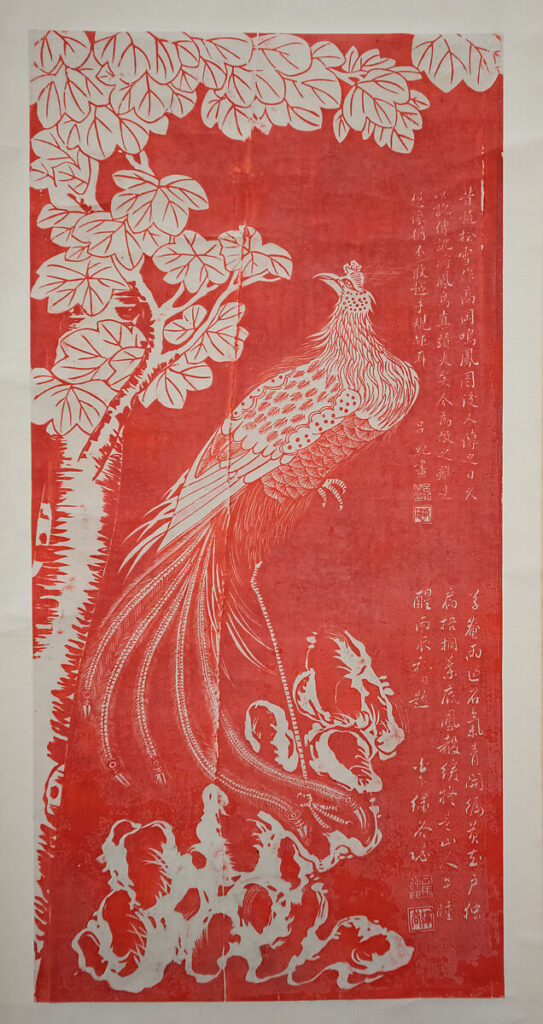
Phoenix by an unidentified artist (19th or 20th century)
Qilin—The qilin is a mythical beast made up of several parts of real animals: antlers from a deer, scales from a fish or dragon, the body of a tiger, the tail of an ox. Also like a Chinese dragon, when a qilin appears before you, usually good things are coming your way.
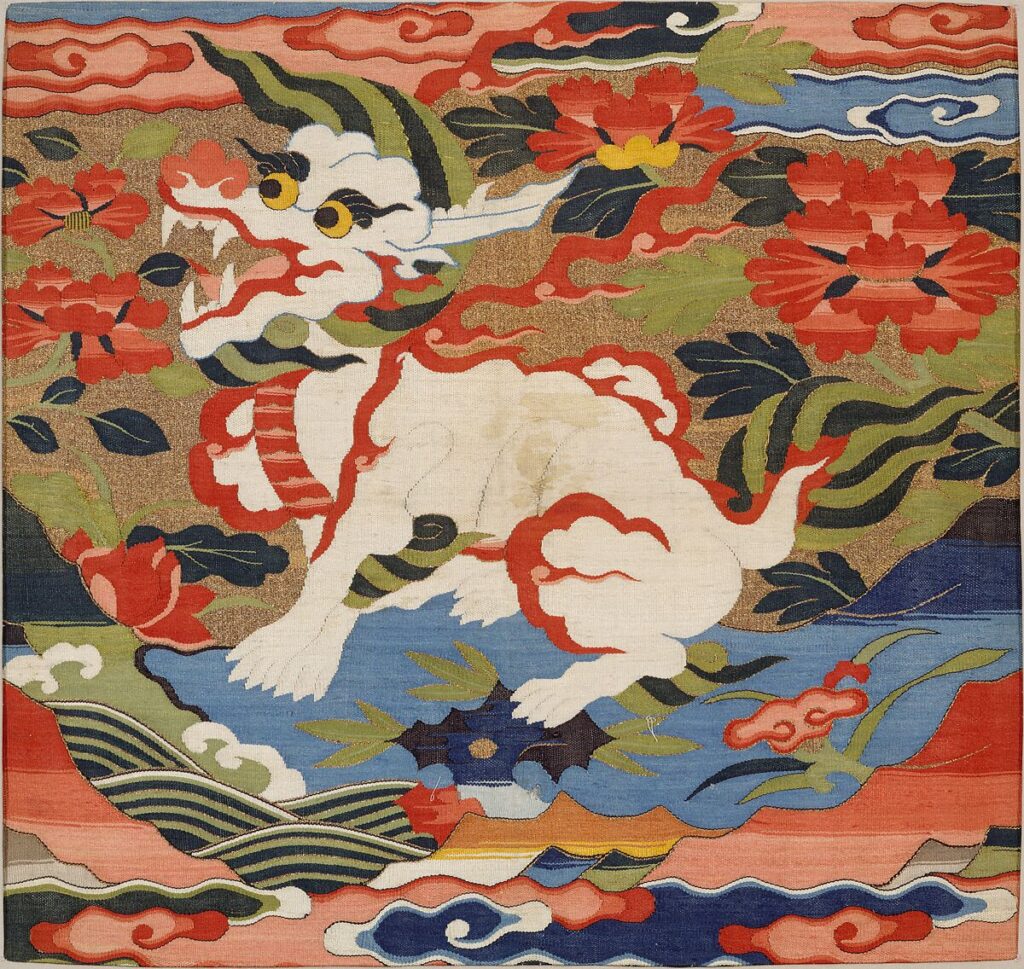
Qilin
Taotie—As Su explained to Lucy and Vlad, the taotie appeared on bronze cauldrons as decorative designs. Typically these showed a bestial face with two eyes but no mouth (even though taotie means glutton, a creature with an endless appetite). They are extremely ancient, dating back 4,000 years or more. Their exact meaning to the ancient Chinese remains shrouded in mystery.
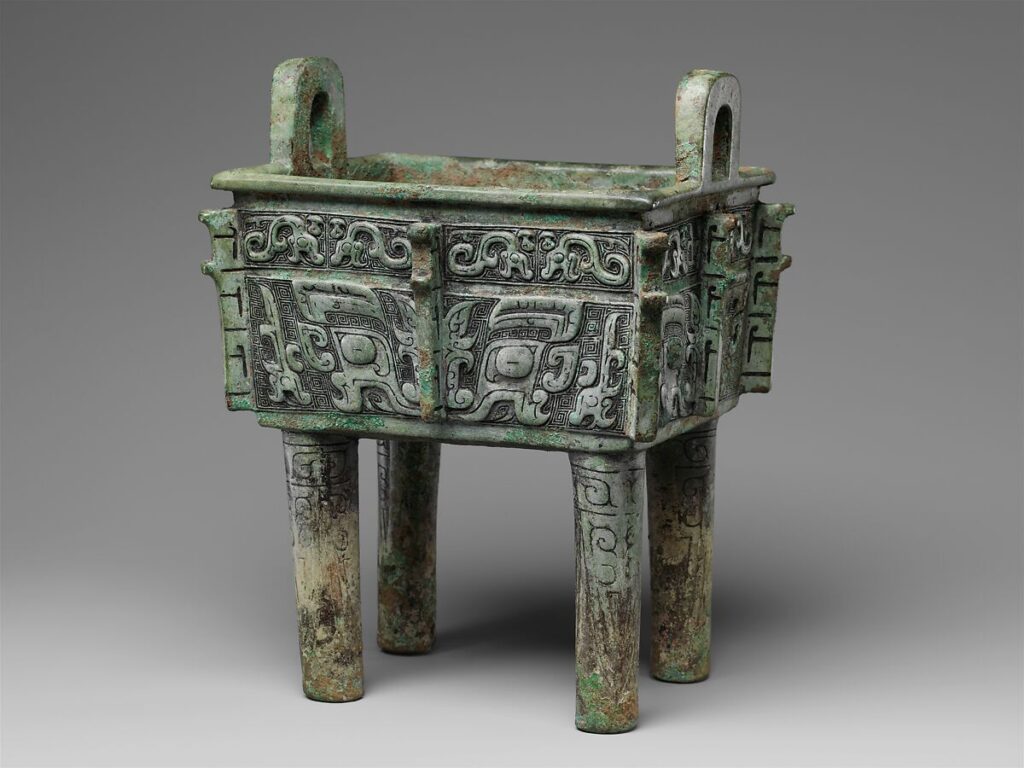
Taotie cauldron fron the Shang Dynasty
Russian Folklore and Mythical Creatures
Russian folklore mingles Christian and pagan beliefs. Its creatures and characters are often darker than their Chinese counterparts. Here is some background on some of those who appeared in The Phoenix and the Firebird.
Firebird—The Russian version of the phoenix, its appearance could spell danger or good fortune—or both. As Lucy understood, the discovery of a feather meant the start of an adventure. You can read about the firebird in fairy tales such as “Ivan Tsarevich”, “The Gray Wolf and the Firebird” and “The Firebird and Vasilisa.”
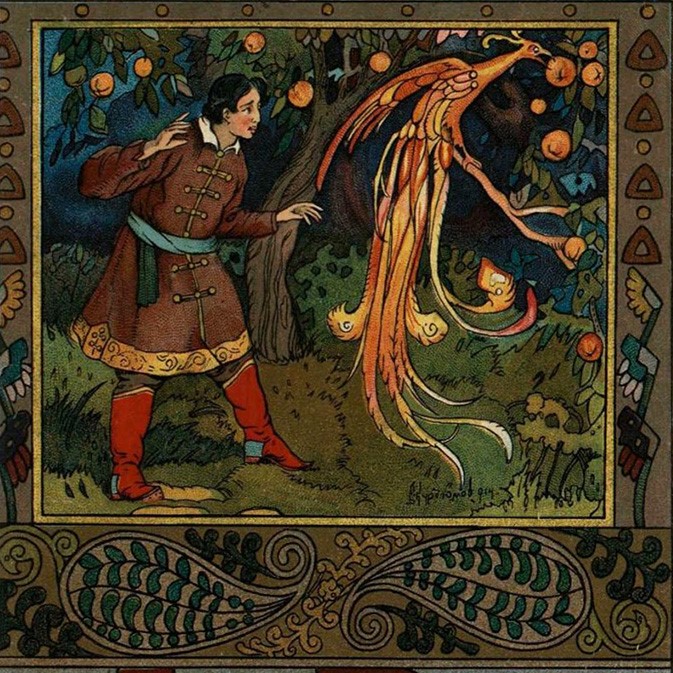
Ivan and the Firebird (unknown artist)
Kikimora—These female creatures typically inhabit one’s house, sometimes protecting it, sometimes making mischief. Typically a kikimora will hide in some dark, out of the way place.
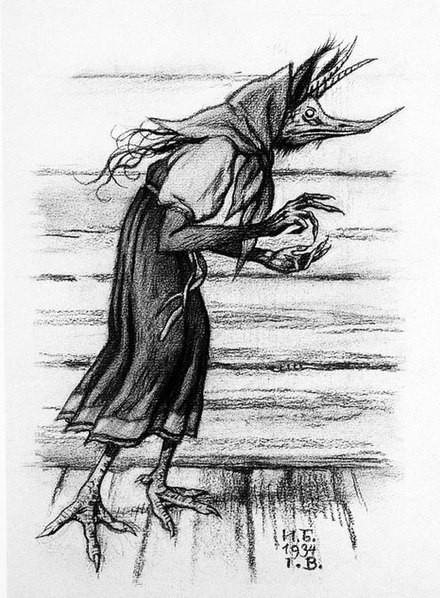
Kikimora by Ivan Bilibin
Koschei the Deathless—An all-but-immortal wizard who haunts Slavic folklore, stealing maidens and slaying heroes. We decided to explore his gentler side. Read about him in the fairy tale “The Death of Koschei the Deathless.”
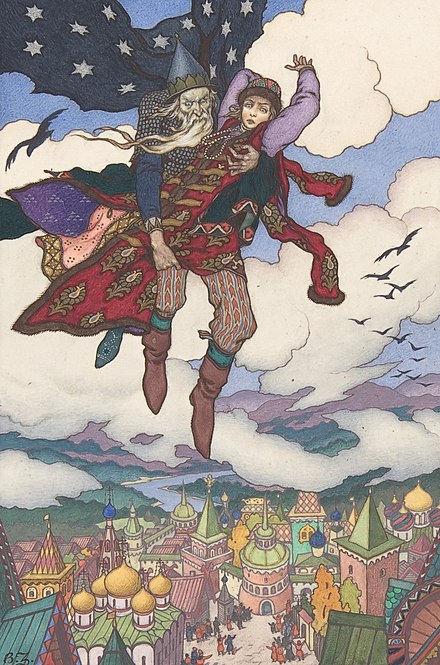
Sorcerer Koschei the Deathless abducts Marya Morevna. Illustration by Zvorykin
Nightingale—A notorious bandit who is part man, part bird. Though he lived on after his fight with Su, you can read about his final defeat in the folktale “Ilya Muromets and Nightingale the Robber.”
Rusalka—It is said these water spirits were once girls and women who had died by drowning. In some stories they tempt men to lean over and savor their beauty, then yank them down into their watery graves .
Vasillisa’s Doll—For Lucy’s doll, we took inspiration from the fairytale “Vasilisa the Fair.” In that story, the doll helps the hero, Vasilisa, out of difficult situations, just as she does for Lucy.
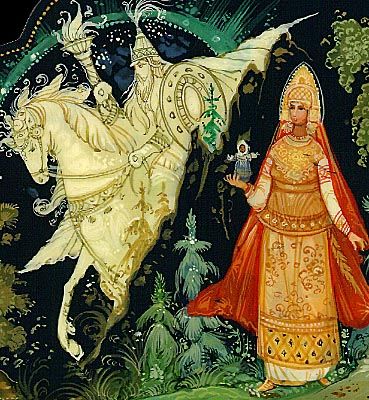
Vasillisa and her doll